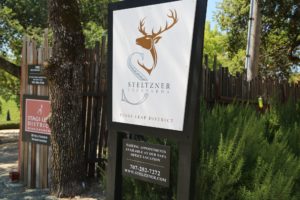
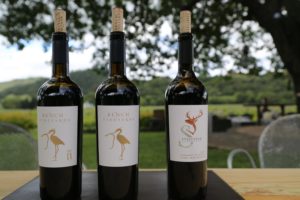 Steltzner Vineyards. The more one digs into the life and times of Dick Steltzner, the more one realizes how influential and productive his decades in the Napa Valley have been to the valley’s wine industry. He was born and raised in Piedmont (east of Oakland, CA only about an hour’s drive from the city of Napa). His family knew the Wente Family (owners of one of the country’s oldest, continuously operated family-owned wineries, founded in 1883) and young Dick would often spend time on their Livermore based ranch where he was introduced to farming.
Steltzner Vineyards. The more one digs into the life and times of Dick Steltzner, the more one realizes how influential and productive his decades in the Napa Valley have been to the valley’s wine industry. He was born and raised in Piedmont (east of Oakland, CA only about an hour’s drive from the city of Napa). His family knew the Wente Family (owners of one of the country’s oldest, continuously operated family-owned wineries, founded in 1883) and young Dick would often spend time on their Livermore based ranch where he was introduced to farming.
Rather than pursue a career in agriculture, he found himself interested in art. He graduated with a master’s degree in fine arts from Sacramento State University and then moved to the Napa Valley in the early 1960s – renting a huge studio off of Lodi Lane for $80 a month and made ceramics. Next, he purchased and moved to a 40-acre piece of property in what is now the Diamond Mountain appellation near Calistoga. He was drawn to the property because it contained a natural spring and equally as important to his artistic interests – plenty of clay that he could use for his own pottery. His property was next to what would become Al and Boots Brounstein’s iconic Diamond Creek Vineyards. Helped in part by proximity and the challenges of planting grapes in this mountainous terrain, Dick became friends with the Brounsteins and helped develop and name the vineyard blocks at Diamond Creek Vineyards.
After an enticing offer was made for his property, Dick sold and moved to what is now the Stags Leap District. After his experience at Diamond Creek Vineyards, he began to offer his vineyard management services to others. He has worked with or established the first vineyards for a remarkable number of Napa Valley based wineries over the years including Clos du Val, Turnbull, Palmaz, Keenan and Cakebread. And early in his career he helped in the development of Spring Mountain Vineyard (incidentally Dick’s relatives used to operate La Perla Winery in the 1870s which eventually became part of the greater Spring Mountain Vineyards property) and vineyards for Clos du Val.
He also worked with clonal pioneer in the Napa Valley, John Caldwell to bring in various varieties – and early on he recognized that AXR-1 rootstock was not going to be desired (AXR-1 turned out to be not resistant to phylloxera)
Fruit from his own Stags Leap vineyards were used in the 1972 Clos du Val Cabernet Sauvignon that was in the Judgement of Paris tasting. In a little-known fact, the inaugural vintage (1974) of Insignia from Joseph Phelps was also primarily sourced from Dick’s vineyards. Later he helped Joseph Phelps locate a vineyard in Stags Leap. And the inaugural release from Conn Creek Winery from the 1973 vintage was a Steltzner Vineyard Cabernet Sauvignon.
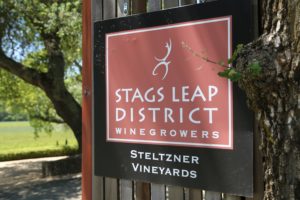
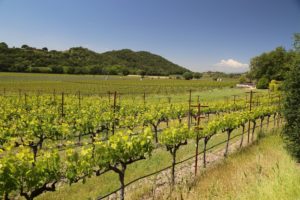 By the mid 1970s Dick was overseeing the management of some 450 planted acres in Napa Valley. In 1977 after not being able to sell all his fruit due to canceling grape contracts the year before because of a very small crop the year before, Dick decided to make his own wine. One of his clients was Bruce Markham of Markham Vineyards. Bruce allowed Dick to make the Steltzner wine at Markham; his inaugural release was the 1977 vintage.
By the mid 1970s Dick was overseeing the management of some 450 planted acres in Napa Valley. In 1977 after not being able to sell all his fruit due to canceling grape contracts the year before because of a very small crop the year before, Dick decided to make his own wine. One of his clients was Bruce Markham of Markham Vineyards. Bruce allowed Dick to make the Steltzner wine at Markham; his inaugural release was the 1977 vintage.
Eventually Dick moved his operations to an old prune packing shed dating from 1915 – and later built a winery, had caves drilled and built a hospitality center. Old timers in the valley may remember the Steltzner fruit stand located along the Silverado Trail – selling seasonal produce and fruit (on an honor cash-based system) including blackberry’s, kiwis and Satsuma Mandarins among other produce. They eventually stopped operating this stand in the late 1980s.
Dick was also instrumental in helping develop the Stags Leap Appellation.
The Plane Crash
In 1976 Dick barely escaped with his life – he and a friend were duck hunting in Chiles Valley and after their efforts left the area in Steltnzer’s single engine plane (with Dick at the wheel). Instead of flying back to the airport Dick decided to fly lower over some ponds in the vicinity of Nichelini Winery hoping to spot some ducks. He pulled down to low and was unable to gain altitude fast enough before crashing into the side of a hill.
In what is the most random and incredible story of timing, a skydiving plane was cruising above and had witnessed the crash. One of the passengers, Dr. James Talcott, an orthopedic surgeon (who along with his wife Nina at the time started Talcott Vineyards – now home to Alejandro Bulgheroni Winery and later founded Talcott Olive Oil in Carneros) just happened to be one of the passengers on the skydiving plane and was preparing for a jump. The pilot radioed in the approximate crash site location and then one of the two doctors on board jumped down to the crash site and attended to the two very badly injured men including Steltzner who had broken both of his legs. Dick spent nearly two months in the hospital during his early recovery from his injuries.
—
For many years their winery was located on the east side of Silverado Trail across from Pine Ridge Winery. At the peak of their production, Steltnzer was producing nearly 25,000 cases a year. A production of this size, managing a tasting room and the efforts needed to sell thousands of cases of wine began to take a toll on the family’s time (including significant time spent in planes crisscrossing the country selling the wine). Deciding to sell the winery, tasting room and 1/2 of their Stags Leap vineyards – they did so in 2012 to the PlumpJack Group (the old Steltzner winery is now home to Odette Estate). The Steltzer’s sold the west part of their property and keeping the back/east parcel.
During one of our early visits to Steltzner we tried a Pinotage – out of the 1,100+ commercial Napa wine producers visited and tasted with to date, Steltzner has been the only winery where we have tasted this variety. While no longer producing wine from this variety, they did make a Pinotage most years between 1996 and 2011. This wine is very common in South Africa but is hardly ever heard of in California much less Napa Valley. This variety was originally created in 1926 as a cross between Pinot Noir and Cinsault.
Dick’s daughter Allison has grown up in the wine business – at one point managing their tasting room and even producing a wine under her own label called Allison. During one of our visits many years ago, we tried two wines under this label, a Sauvignon Blanc and a rosé of Syrah.
After the sale, the family refocused their vineyard and wine making efforts – overseen by Allison. She speaks of continuously challenging themselves to get better in what they do – with constant communication playing an integral role between everyone involved. This has led to an exciting synergy and a renewal built upon decades of experience complemented by passion and the never ending always moving pursuit of perfection.
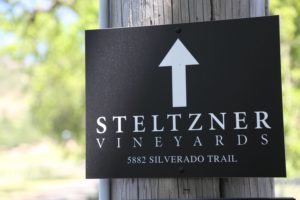
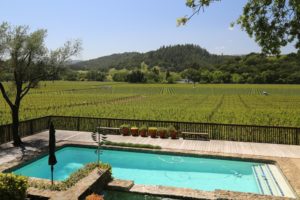 Steltzner originally focused on only Cabernet Sauvignon for their first several vintages. Their inaugural vintage was in 1977. Today while producing extremely small quantities of the Steltzner wines, they have shifted the focus somewhat to Bench Vineyards, appropriately named for its slightly elevated position above the valley floor – located on the eastern side of the valley against of the backdrop of the rugged and rocky Palisades. Allison recalls her father was attracted to this particular site based on the morning fog often burning off on top of a hill just south of their vineyard. And in hind-site this part of the Stags Leap District has certainly proved itself over the decades – their vineyard borders Joseph Phelps’ Insignia Vineyard, is near Stag’s Leap Wine Cellars Faye Vineyard and within eyesight of Shafer’s Hillside Vineyard. The soils can vary dramatically here, even within short distances – ranging from very rocky to clay like as one heads west.
Steltzner originally focused on only Cabernet Sauvignon for their first several vintages. Their inaugural vintage was in 1977. Today while producing extremely small quantities of the Steltzner wines, they have shifted the focus somewhat to Bench Vineyards, appropriately named for its slightly elevated position above the valley floor – located on the eastern side of the valley against of the backdrop of the rugged and rocky Palisades. Allison recalls her father was attracted to this particular site based on the morning fog often burning off on top of a hill just south of their vineyard. And in hind-site this part of the Stags Leap District has certainly proved itself over the decades – their vineyard borders Joseph Phelps’ Insignia Vineyard, is near Stag’s Leap Wine Cellars Faye Vineyard and within eyesight of Shafer’s Hillside Vineyard. The soils can vary dramatically here, even within short distances – ranging from very rocky to clay like as one heads west.
The wines from this vineyard are refined, feminine in their structural approach and certainly are a contrast to the bigger and more powerful wines from say the Oakville or Rutherford appellations to the north. These are extremely balanced wines with excellent acidity.
Taking the management of the Bench Vineyards to the next level, well-regarded vineyard manager, Jim Barbour and his highly skilled crew took over the management of the vines in 2014. The 30-acre site is planted to 27 acres of which there is a coveted 5-block section planted to Cabernet Sauvignon dating back to 1976 (all dry farmed). In addition to Cabernet Sauvignon, the vineyard is planted to Malbec, Sangiovese, Petit Verdot and Merlot.
Rather than larger production wines needing distribution, today the focus of their vineyard and wine making efforts are on limited production, premium wines sold primarily direct to consumer. While still producing Steltzner wines, Allison and her husband Sam introduced Circa 64 Wines in 2015 (named in honor of the year when Dick first purchased property in the Napa Valley). Both Steltzner and the Circa 64 Wines are from the Bench Vineyards.
Looking to elevate the stature of visibility of their vineyard, they continue to selectively sell fruit to premium producers – and in 2015 several Napa producers released their first Bench Vineyards designate wines.
Their wine making is shared between two winemakers – one with decades of experience, Bob Pepi and the much younger Mike Smith (who has already created premium wines for a number of labels). Most of their fermentation is now done in barrels.
Select Wines
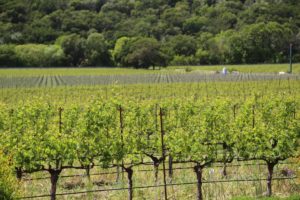 The 2015 Bench Vineyards Circa 1964 is a proprietary blend where the best barrel lots are chosen each year regardless of variety. This vintage is a blend of 50% Cabernet Sauvignon, 25% Petit Verdot and 25% Malbec. Incidentally the family was drawn to the varietal characteristics of Malbec because of their exposure to the wines coming from Mendoza, Argentina (based on numerous visits to this country and spending time at one of their homes in neighboring Punta del Este, Uruguay). Immediately shows inviting aromas – this is a lively bouquet with notes of blackberry tinged with cocoa powder. A core of red fruit plays across the palate – it is extremely harmonious in its approach from start to finish. Very approachable in its youth – it is supple in texture but framed with an intensity of fruit. Pleasing fine grained and polished tannins linger smoothly on the finish.
The 2015 Bench Vineyards Circa 1964 is a proprietary blend where the best barrel lots are chosen each year regardless of variety. This vintage is a blend of 50% Cabernet Sauvignon, 25% Petit Verdot and 25% Malbec. Incidentally the family was drawn to the varietal characteristics of Malbec because of their exposure to the wines coming from Mendoza, Argentina (based on numerous visits to this country and spending time at one of their homes in neighboring Punta del Este, Uruguay). Immediately shows inviting aromas – this is a lively bouquet with notes of blackberry tinged with cocoa powder. A core of red fruit plays across the palate – it is extremely harmonious in its approach from start to finish. Very approachable in its youth – it is supple in texture but framed with an intensity of fruit. Pleasing fine grained and polished tannins linger smoothly on the finish.
The 2015 Bench Vineyards Circa 64 Cabernet Sauvignon is 100% varietal sourced from the D block on site (all Martini clones that Dick originally took from cuttings from Louis Martini’s back yard decades ago). These Cabernet Sauvignon vines date back to 1976, a rare older planting of this variety in the Stags Leap District. This is an elegant wine both on the bouquet and on the palate. It is dark in the glass revealing an inviting bouquet with blackberry and blueberry aromas and a hint of vanilla. Like the bouquet, the palate is about the fruit rather than many secondary characteristics from the oak – what we immediately noticed about this wine is its finish. The tannins are silky smooth, yet noticeable and are somewhat chalky in their presentation. Very good acidity.
The 2015 Steltzner Vineyard Estate Cabernet Sauvignon is a noticeably different wine then the same vintage Circa 64 wines. Shows aromas of boysenberry with hints of chocolate on the bouquet. Offers flavors of black currant, plum and cherry leading to a very long finish. One immediately notices the mouthwatering acidity. The finish is long, the tannins are not course but there is a noticeable drying grip to their texture – and they linger along with a mouthwatering tartness of fruit.
The 2016 Bench Vineyards Cabernet Sauvignon “The Heron” Stags Leap District is from a tiny premium block on their property; it is 100% varietal. Only 2 barrels of this wine were produced. Brooding, dark, mysterious and somber initially, the bouquet offers a variety of fruit and dessert spice aromatics including blackberry, boysenberry along with a graham cracker, a darker chocolate note, toasted cedar and a hint of black pepper. Allison likes to call this her “love letter to the Stags Leap District” a showing of both power and opulence yet simultaneous restraint. A noticeable intensity on the palate but without the accompanying massive tannins. While firm and long lasting, the tannins are rounded and smoothly integrated into the finish.
The label for the Circa 1964 wines is intriguing – with the idea coming from a family crest, the label was tailored for their own vineyard and features a heron with a rattlesnake in its beak (with a small reservoir on site and their proximity to the rocky hillsides, they have both herons and rattlesnakes on the property).
The Steltzner’s maintain an office in the city of Napa (where tastings are offered in their salon by appointment). Their vineyard property is only open for the once a year private, V2V (Vineyard to Vintner) weekend event where select Stags Leap wineries and producers open their doors to those who have purchased tickets to this particular tasting event.
Heron House, Yountville
Steltzner and Bench Vineyards were members of the Heron House in Yountville until December 11, 2022, when the Heron House closed permanently. We keep these notes and photographs for historical reference. The Heron House in Yountville opened the day after Thanksgiving 2019 and was a retail wine tasting space in SoYo (South Yountville) which featured a select number of small-brand producers who did not maintain their own tasting rooms. These winemakers were friends of Allison’s or work with Allison.
The Heron House was setup to feel like walking into someone’s living room – comfortable, cozy and inviting. The retail portion of the space was open during normal business hours and included mostly locally crafted products including select works of art. Select pieces of art from South America, primarily Uruguay was also featured. Two private tasting rooms were available by reservation. Several curated flights were offered, each containing wines from the various producers represented. Allow up to 90 minutes for a visit. Hours are subject to change, but as of our latest update to this review, this space is daily from 10am until 6pm with the last tasting appointment at 5pm. Weather permitting, tastings can also be held outdoors at one of several tables in the courtyard.
Total production of the Steltzner wines is only around 400 cases a year between a Sangiovese and a Cabernet Sauvignon. The Bench Vineyards wines are also extremely limited. For more information, to join their mailing lists, or to schedule a tasting, visit: www.circa64wines.com




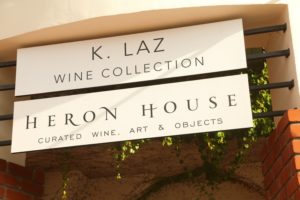
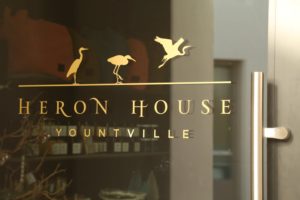
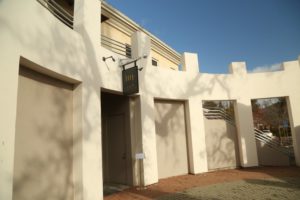
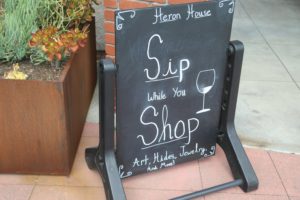
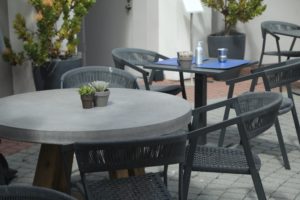
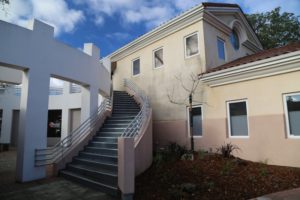
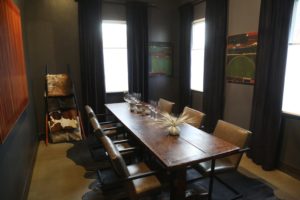
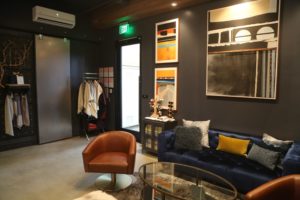
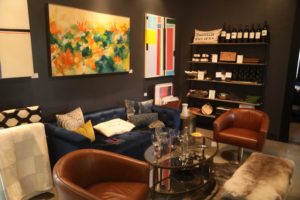
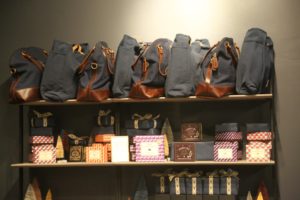
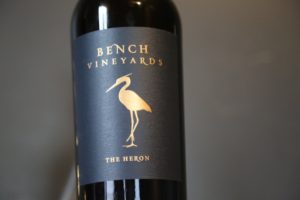
My name is Aileen Davis. Just opened a 6 liter 1988 Cabernet that I had for 31 years #26/30 bottle. Uncorked it 2-18-2019
Would like to share my experience with you and how good it was 🍷👍
Aileen – wow, that is quite a large format! Very good to hear that is had aged well over the years. 1988, where did 30 years go?! Thanks for sharing 🙂
In the summer of 1993, my best friend and I were hiking up the California coast all the way to British Columbia, and we stopped by Dick Steltzner’s property for a visit. I had bought and sold some of his claret and cabernet in an Oklahoma liquor store before and wanted to pay my respects. He invited us into his newly dug wine cave (It seemed like it was still being finished) and was eager to hear about our hiking adventures. We drank his delicious sauvignon blanc at a wooden table inside the entrance of the cave, and I’ll never forget that he warned us not to take any “contraband” across the border or risk getting caught. He was so warm in his hospitality and genuine in his love of wine and people. Thank you, Dick for being just who you are and your kindness to two travelers on the California highways.
Lawrence – thank you very much for sharing this story. Dick is an integral part of the success of Napa Valley 🙂